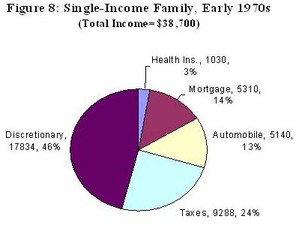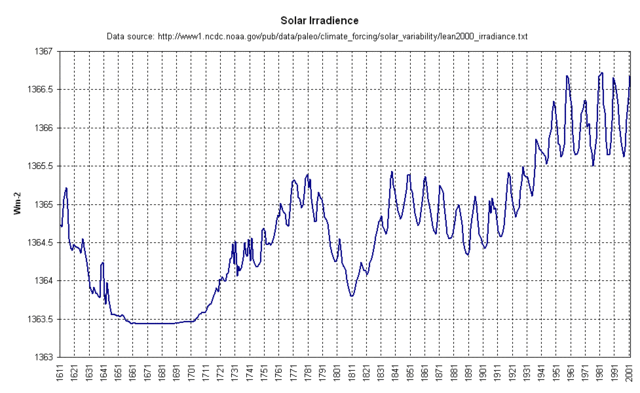It is not surprising that that a debate like the one over estate taxes that attracts so many class warfare fanatics should miss the point on a lot of issues. However, the estate tax debate has been handled in the media perhaps worse than even other tax debates, which is a pretty low bar to try to crawl under. The reason I say this is that the most serious "end the estate tax" type proposals out there have two parts, only one of which I have ever seen mentioned in the press:
- End the federal tax on estates (this, of course, is the part that gets the press)
- End the stepping-up of the cost basis of financial assets at death (this part never gets mentioned)
This 2nd piece of the proposal may seem arcane to some -- let me explain. Most large estates (ie, the ones that estate tax supporters are concerned about) are dominated by financial assets (e.g. stocks, bonds). These financial assets, typically held for years, tend to have a cost basis far below their current market value. An example might be shares of Microsoft held for 10 years that were purchased for only a small fraction of the current price. The cost basis of a financial asset is generally its purchase price plus commissions and other transaction charges.
Lets take a gentleman who dies and whose estate is made up entirely of $10 million worth of Coca-Cola stock bought years ago for just $5 million. The estate all goes to his one daughter. Under estate law, two things would happen. The estate pays a large tax on the $10 million, and the remainder flows through to his daughter. Lets say taxes take half, and his daughter now has $5 million of stock with an original price of $2.5 million. The other thing that happens is the basis of assets is stepped up to current market value. That means that as far as the IRS is concerned, his daughter owns stock worth $5 million with a basis of $5 million. If she immediately sold the stock, she would have no capital gains tax.
There are a couple of good arguments against the estate tax. From an efficiency standpoint, it diverts large pools of capital from private investments into the hands of the Federal Government, where only the most ardent statist would argue that it is better spent. Also, billions and billions of dollars are spent every year with lawyers, accountants and financial planners to find ways to dampen the impact of the estate tax. This is all wasted, unproductive effort that would immediately be redirected to more productive uses if the estate tax were eliminated.
From a fairness standpoint, the estate tax acts as a second tax on income that has already been taxed before. In our example, though the $5 million capital gain is getting taxed for the first time in the estate, the $5 million original costs, which must have come from taxed income at one time, is getting taxed for at least a second time. The other fairness problem becomes visible if we change the name of the stock from Coca-Cola to "Dad's private company." For family businesses, ownership is not as easily divisible - you can't sell half or two-thirds that easily in part because there is not much market for minority shares of small family businesses. What therefore happens in practice is that the daughter must sell the family business to pay the taxes.
The estate tax reform plan outlined above eliminates both these latter problems. Under these rules, the daughter would inherit the full $10 million of stock, but, unlike today, her basis would remain the same as her dad's -- in this case, $5 million. She would not pay any tax until she sold any of the assets. And then she would pay capital gains taxes using the lower basis of her father's.
This results in two beneficial outcomes: a) taxes are only charged on the part of estates that have not already faced income taxes and b) taxes are only paid when the individuals who inherit choose to make an asset sale and convert assets to cash. The timing of assets sales drive taxes, whereas today, in all too many cases, taxes drive the timing of asset sales. (By the way, supporters of the estate tax also argue that it is good because the estate tax incentivizes charitable giving. The argument is that the tax is so confiscatory, and that the government so well-known as a black hole for money, that rich people decide it is better to give it away than to let the government take it all. This is an odd argument for statists to make, but they do. Note that in this estate tax proposal, the daughter would inherit a lot of low-basis stocks. The same charitable giving incentives exist for low-basis stocks, since the IRS will give you credit for the market value as a deductible gift but you don't have to pay the capital gains).
Asymmetrical Information has been on this case for a while:
There is no case for saying, as the New York Times inexplicably does, that "Repeal would shield
the estates of the very wealthiest Americans from the tax." It does not. It
does, however, defer taxation. Because basis will no longer be 'stepped-up'
after death (except for a $1.3 million exemption) they will simply be taxed like
all other capital gains - at the time those gains are realized.
Stepped-up basis is one of the four legs of the estate-planning stool along
with the life insurance tax exemption, minority discount valuations and the division of income and
principal interests (such as the "estate
freeze"). It is not entirely clear that beneficiaries of large estates are
better off after repeal when the full toolkit of estate planning techniques is
taken into account - unless capital gains tax is done away with altogether and
the states stop taxing estates. Neither is likely to happen.
Given the large estates I've seen avoid taxes, I am skeptical of analyses
that suggest an enormous impact to revenues from this repeal. I don't believe
they factor in the new potential revenues from carryover basis outside the
traditional estate tax shelter vehicles. Certainly, the capital gains rate is
lower than the estate rate, but when estate tax shelter vehicles dwindle away,
more assets will ultimately be subject to capital gains taxation. Based on what
estate planning professionals tell me, it will be a wash in many cases and more
expensive in some significant estates. In other words, with respect to the
Estate Tax, we may still be in the fat part of the Laffer curve, where a lower statutory rate may yield higher
revenues over time (due to avoidance behavior, not a lack of work
incentives).
This post also cites a study that says that increased capital gains taxes on inherited assets could offset estate tax losses to the government. That seems aggressive, assuming a lot of assets are getting passed in vehicles (trusts?) that avoid or limit estate taxes, but the offset is there never-the-less and is something you will never ever see in a newspaper article about the estate tax.
I haven't paid attention to the current Congressional proposals out there, but the post goes on to argue that Congress, as is its wont, has chosen the worst of both worlds while maximizing rent-seeking opportunities.
postscript: By the way, shame on all of those accountants, lawyers, and others in the estate planning profession. They all tell their clients that the estate tax is confiscatory, and can go on for hours with a client about various things that are unfair in the system. But at the same time they run to Congress begging them to keep the whole tottering complex system in place to protect the rent they extract from inefficiencies in the system






